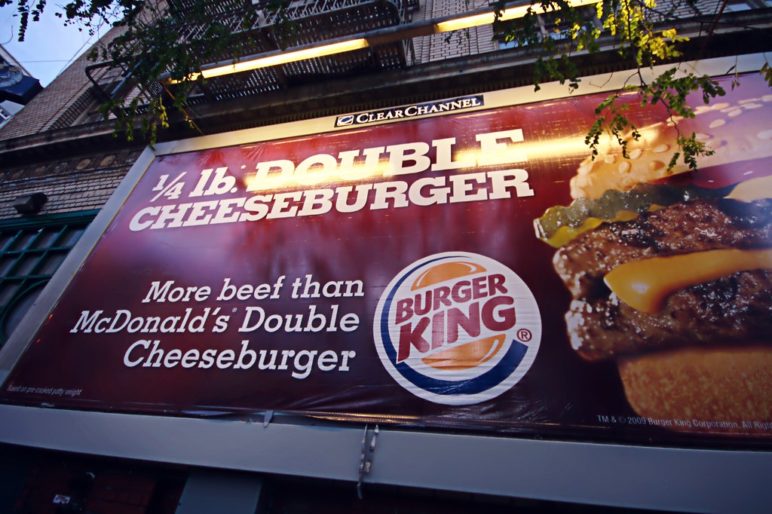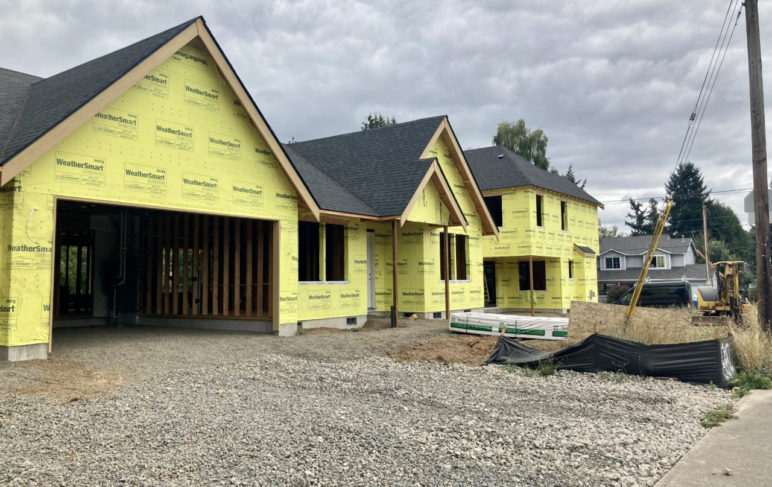Sometimes it’s hard for me to remember how normal Cascadians think about housing. After all, I’ve spent the last 10 years in an ever-spiraling obsession with housing policy. (Wait. Maybe that’s exactly what makes me a normal Cascadian. Anyway…)
This is how I suspect most normal people think about housing:
Prices are ridiculously high. New apartment buildings near me are annoying. But I can deal, because more apartments are supposed to be the answer to the price thing. But how can that possibly be the answer when the prices of the new apartments are so high? Developers must be building too fancy. They should build less fancy.
Guess what? Normal people are correct. I’ve spent the last 10 years in housing policy learning that all of the above is basically true. The main factor driving the cost of all housing is the cost of building new housing.
If we want our cities’ older homes to cost less, either to buy or rent, we need it to be less expensive to create a new home. Why? Here’s one way I like to think about it.
Home prices are like hamburger prices

Everything we buy simultaneously competes on both quality and price with other things we could buy instead. 1/4 lb Double Cheeseburger by Alfonso Jimenez used under CC BY-SA 2.0
A Big Mac sells for $4.89 right now for two reasons. First, because it costs less than $4.89 to give someone a Big Mac. Second, because a Whopper, which tastes better, sells for $7.29.
McDonald’s would love to raise the price of a Big Mac to $6 or $8, but it can’t. It’s competing with Burger King on both price and quality. If it jacks the price too high, I’m buying a Whopper instead.
The seller (or landlord) of an existing home is McDonald’s. There’s a puddle in the cellar and the kitchen window is jammed shut, but that’s not going to stop the seller from raising the sale price (or rent) anyway… right up until the point where the landlord is afraid the unit will sit empty for a precious month or three. And what might make the unit sit empty? If I can find a nicer place—like, say, a newly built one—for not much more money.
The developer of a new home is Burger King. (With me so far?)
Next question: Why isn’t Burger King, or Burgerville, or some other voracious capitalist, putting greedy McDonald’s out of business by selling the Whopper for $5?
Because it costs somebody more than $5 to hand you a Whopper. If you’re losing money on every Whopper, selling more Whoppers won’t help.
There are a lot of other complications to housing, of course. (To food, too.) But in the end, pricing mostly comes down to cost. The price of existing homes is held down (or driven up), more than anything else, by the cost factors of creating new housing.
Busting housing myths
Once I grokked this two-step between costs and prices, a lot of things started to make sense.
Here’s one: Why isn’t the answer to homelessness “just let the market build”? Because even cheap old homes cost money to keep habitable: upkeep, utilities, property taxes. Wherever you live, that stuff comes to a few hundred bucks a month. Many people simply don’t have that much money in a month, let alone enough for other necessities. One way or another, ending homelessness requires those people having more money, or else an equivalent home subsidy. (Sightline’s general take: give poor people money.)
Here’s another: Why not cap rent hikes in older buildings at the inflation rate? Because upkeep, utilities, and property taxes regularly rise faster than inflation. If the cost of a hamburger were capped at $1, hamburgers wouldn’t start selling for $1. What would happen is you wouldn’t be able to buy a hamburger anymore, except maybe on the black market where they’d go for $30 each.
If all of us deserve a home, and I happen to agree with the 1948 United Nations General Assembly that we all do, there’s no alternative to taxing and spending. And if we also want to avoid housing shortages like today’s, there’s also no alternative to making homes cost less to build.
How to cut the cost factors of housing
This brings me back to where we started. Prices are ridiculously high. Developers must be building too fancy. They should build less fancy.
Here’s the bad news. I promise you’re not going to like it. Remember how Whoppers taste better?
“Fancy” is just another word for “nice.” And we the people, who want everyone to have nice things, are constantly trying to get this to happen by requiring everyone to purchase nice things.
For example, yards are nice. Many places require everyone who wants a home to also purchase a yard. (This was called “single-family zoning,” and fortunately Oregon was the first state to mostly end it.) Other very nice, mandatory things include windows, coated electric cables, and indoor plumbing, all cost factors that should probably remain mandatory in new homes.
In between are a bunch of other nice but nonessential things. In the current issue of Willamette Week, I go into five specific ideas for cutting the cost of new homes. Or if you’re an audio person, I also talked about three of them with Brianna Wheeler on the newspaper’s podcast.
In the end, here’s the thing: different people define home differently. We all prioritize different aspects of housing compared to all the other important parts of our lives. And when our governments require homes to be a certain level of “nice” to be allowed to exist, they’re making assumptions that don’t apply to everyone. Some of those rules are well worth their costs. Others aren’t.
Or, to steal a phrase from my Willamette Week editor, Aaron Mesh: today’s housing rules mean you can’t have it your way.











Eli Spevak
Great synopsis!! I must admit, after hearing your WW interview pitch for the hamburger/housing metaphor, I thought it was going to be about selling new hamburgers vs. selling old hamburgers. I appreciate that you didn’t take it in that direction.
Eli Spevak
As a follow-up, I’d be interested in some reflections or framework for thinking about which ‘nice things’ should be mandatory vs. optional. It’s a lot easier to talk about this in the extremes (Mandatory: roof. Optional: yard). But in the grey areas, cost gets balanced against life safety, health, equity concerns, and the broader environment. That’s the really hard stuff, which the legislative task force on building codes is just about to start wrestling with.
Eric
I personally have a hard time justifying any required amenities beyond basic health and safety measures, at least not until we get to a point where the government is going to guarantee everyone a certain standard of housing regardless of income level.
The question we should be asking at the moment is “if someone can’t afford housing with _____ feature, should they have to live in a tent?” Is it better to live in a tent than in a house that will burn down the next time you try to run the microwave and hair dryer at the same time? Quite probably! Is it better to live in a tent than in a 200 square foot micro studio with no parking and a tiny window that barely meets egress requirements? I’d say no.
If we get to the point where we’ve decided everyone deserves at least 500 square feet of living space with a full kitchen and a bike locker and air conditioning and in-unit laundry, and we’re willing to back that up with subsidies for those who can’t otherwise afford it, *then* we can talk about banning construction of homes that don’t include these features. We’re a long way off from that point.
Bill Leif
Well-written article. Two of the things that could have been added (if you had infinite time) are (1) “historical circumstance” and (2) more about the cost (and benefit) of renovating / retrofitting an old house per new codes. Re #1 – those of us who came of age in Seattle in the late 1970s unconsciously enjoyed a housing glut (lotta post WWII houses then a big sag in Seattle population from 1965ish to 1990. Housing was cheap then WHAM the bathtub filled back up then overflowed and we blamed the last drop of water as evil. Re #2, bumping out the back wall of my 1908 no-foundation 760 sf Ballard house in 2018 was going to cost over $1000 / s.f., due in large part to energy codes that would apply mostly to the added 200 s.f. 2×12 rafters in the new part, old 2x4s elsewhere. Even I, as a public works civil engineer, could see that superinsulating the roof of the back 1/5 of an ancient house provides less env. benefit for more $ than a more modest increase in insulation for the whole house (which we had already done for about $2K). My wife and I agreed we weren’t going to sink $250K into adding 200 s.f. – we’d just get rid of stuff (which was almost cost-free!). Sigh. BTW, my wife and I, both early 60s, couldn’t dream of buying our tear-down house today. My 30 yr old daughter’s plan – leave Seattle and move someplace she can make a living.
Michael Andersen
Hey, thank you, Bill! Good points, and I love that bathtub metaphor.